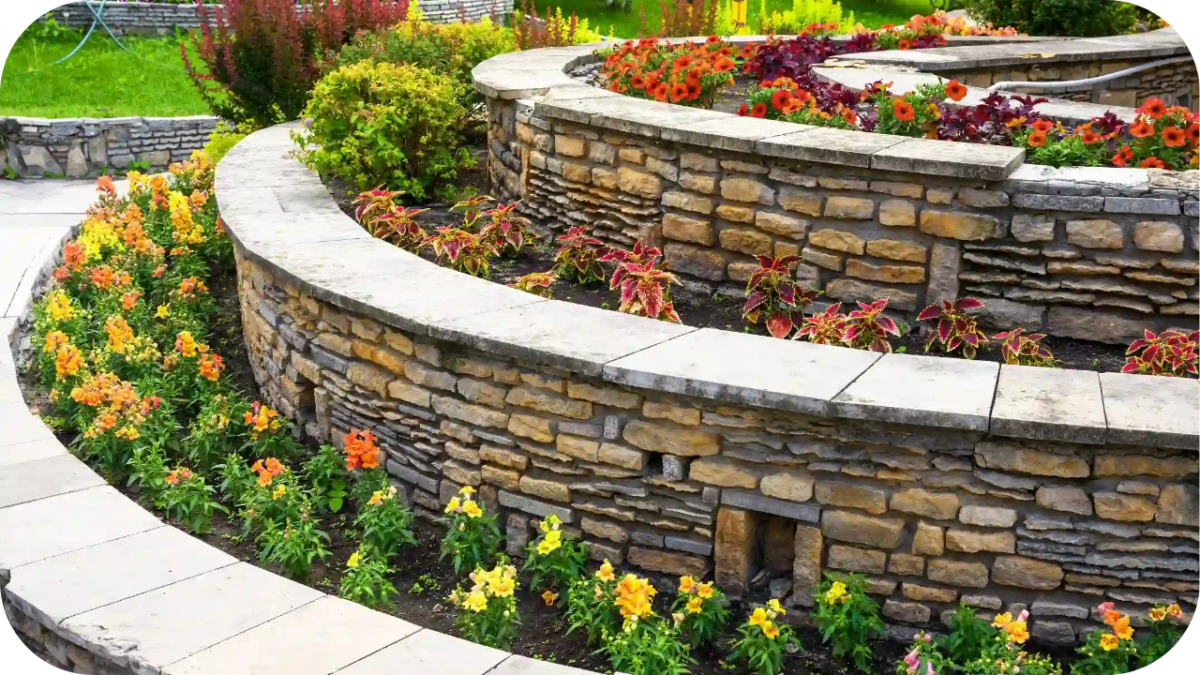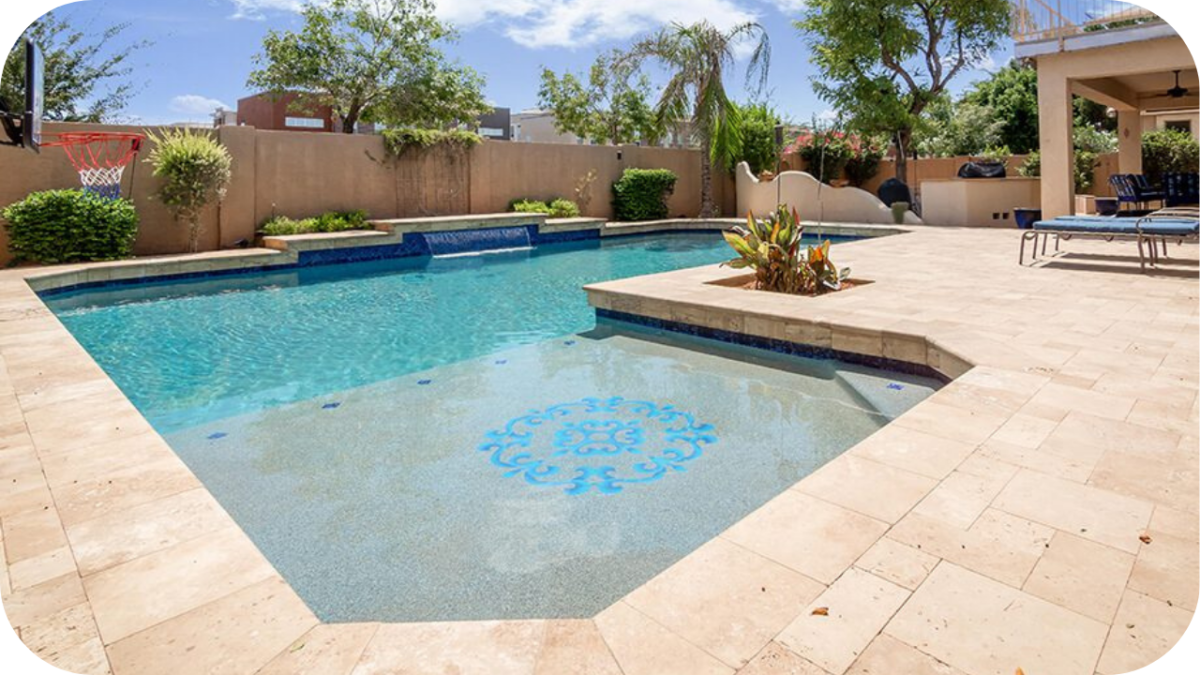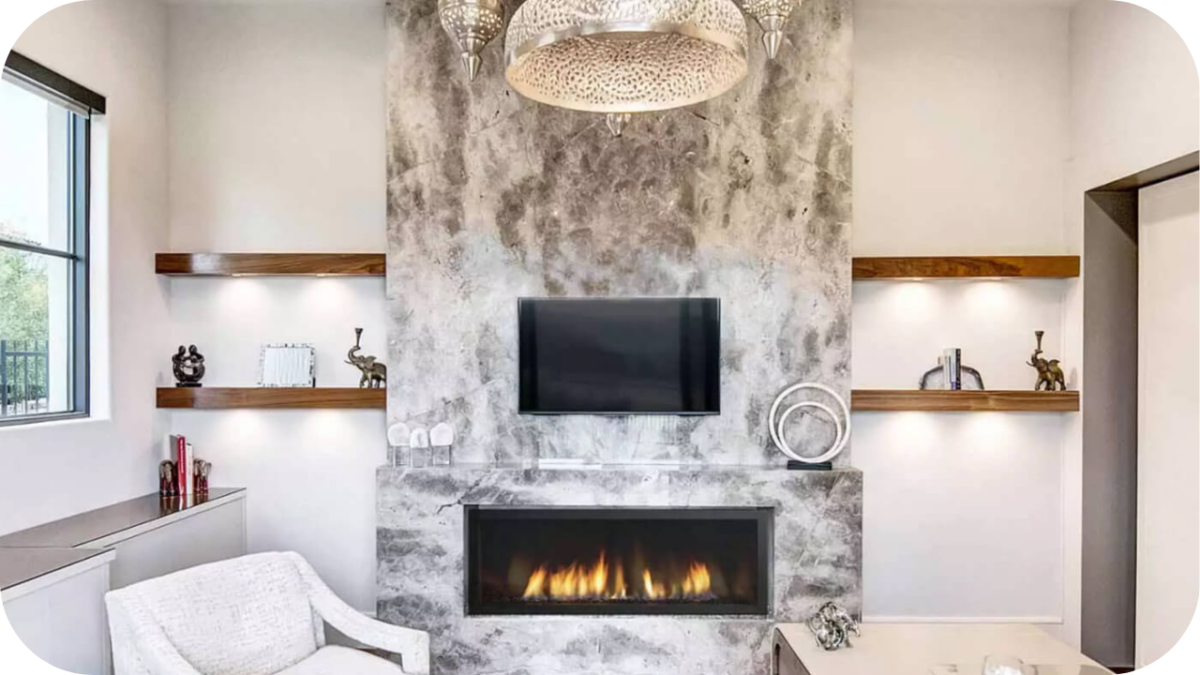What Makes Limestone the Perfect Choice for Garden Walls?
Garden walls are more than just boundaries. They frame your landscape and define your outdoor style. The material you choose for your garden walls directly impacts both their functionality and visual appeal.
Whether for a structural retaining wall or a decorative boundary, the right stone enhances the overall look of your outdoor space. Limestone is an ideal choice, offering a beautiful balance of strength, elegance, and timeless appeal.
In this article, we will cover the reasons why limestone stands out for garden walls and its key benefits, design options, and installation tips.
What Makes Limestone the Perfect Choice for Garden Walls?
Limestone is an excellent choice for garden walls due to its durability, aesthetic versatility, and weather resistance. It’s easy to work with, provides natural beauty in various shades, and offers long-lasting performance in both hot and cold climates, making it ideal for any outdoor project.
Key Benefits of Limestone for Garden Walls
Limestone offers a combination of durability, natural beauty, and ease of use. Here’s why limestone remains a top choice for creating stunning garden walls.
1. Offers Natural Durability
Limestone withstands wear, weather, and physical impact, making it perfect for both retaining and freestanding garden walls. It maintains its structural integrity over time, even in harsh outdoor conditions, ensuring long-lasting performance and beauty.
2. Provides Aesthetic Versatility
Limestone comes in various natural shades, from soft greys to warm beiges. This variety allows it to complement both traditional and modern garden designs. Its understated elegance blends seamlessly with landscaping elements and enhances outdoor spaces.
3. Performs Well in All Weather Conditions
Limestone resists damage from extreme weather and moisture. It holds up well under both freezing temperatures and intense heat, ensuring your garden walls stay intact and beautiful, even in Australia’s harsh climate.
4. Easy to Work With
Limestone is easy to cut, shape, and install. Its workability makes it ideal for dry-stacked, mortared, or cladded walls. The stone’s flexibility ensures a smooth installation process and a wide range of design possibilities.
5. Sustainable and Environmentally Friendly
Sourcing limestone locally reduces its environmental impact. As a natural, low-carbon material, limestone’s eco-friendly properties make it a great choice for those looking to build sustainable garden walls that complement their natural surroundings.
Types of Limestone Suitable for Garden Walls
Choosing the right limestone type for your garden wall ensures both durability and aesthetic appeal. Here are the best limestone varieties to elevate your outdoor space.
1. Jamieson Limestone
Jamieson limestone offers neutral tones and a textured surface, making it ideal for classic garden walls. It blends seamlessly with various landscapes and withstands harsh weather, providing both elegance and durability for outdoor spaces.
2. Beloka Limestone
Beloka limestone features soft, subtle hues and a refined texture, perfect for creating durable garden walls. Its timeless beauty enhances both traditional and modern landscapes, while withstanding the elements with minimal upkeep.
3. Marrakesh Limestone
Marrakesh limestone boasts earthy tones and strength, making it ideal for both decorative and structural garden walls. It complements surrounding plants and natural materials, offering long-lasting durability while enhancing the beauty of outdoor spaces.
4. Grange Limestone
Grange limestone is versatile and strong, with a rugged yet elegant texture. Perfect for both rustic and refined garden wall designs, it resists wear and weather, ensuring long-term beauty and stability in outdoor environments.
5. Luxe Limestone
Luxe limestone provides a smooth, modern finish with consistency in texture and colour. Its refined look adds sophistication to garden walls, offering durability and low maintenance to keep your outdoor spaces looking fresh over time.
6. Jasper Limestone
Jasper limestone features warm, earthy tones and a textured finish, perfect for traditional garden walls. It stands strong against outdoor elements, providing long-lasting durability while enhancing the charm and character of any landscape.
Limestone vs Other Walling Materials
Choosing the right material for garden walls depends on durability, aesthetics, and maintenance. Here’s how limestone stacks up against other popular walling options.
| Feature | Limestone | Sandstone | Brick | Concrete |
| Appearance | Natural, elegant tones with unique veining and texture | Warm tones with natural textures and rustic appeal | Uniform and consistent in shape, can lack natural variation | Can be shaped and coloured, but lacks organic beauty |
| Durability | Highly durable, withstands weather, moisture, and UV exposure | Strong but can weather more quickly under harsh conditions | Durable but may crack under extreme weather or shifting | Highly durable but prone to cracks, especially in harsh climates |
| Weather Resistance | Excellent resistance to freezing and thawing, perfect for outdoor use | Performs well but can erode in wet or freezing conditions | Good resistance but can weather over time, especially in wet climates | Resists weather but may discolour and require sealing over time |
| Maintenance | Low maintenance, requires periodic sealing for long-term protection | Requires regular maintenance and sealing | Moderate maintenance, may require repairs and re-pointing | High maintenance, often needs resealing and repair |
| Cost | Mid-range cost, offering good value for the longevity and appearance | Generally affordable, but can vary depending on the grade of stone | Lower upfront cost, but may need more repairs over time | Cost-effective upfront, but long-term maintenance may increase costs |
| Eco-Friendliness | Natural and eco-friendly when sourced locally | Natural, but sourcing can have a higher carbon footprint | Often produced from fired clay, has a higher environmental impact | Higher environmental impact due to manufacturing process |
| Versatility | Highly versatile, suits both traditional and modern designs | More suited to rustic or Mediterranean designs | Ideal for traditional and industrial applications | Versatile in design but lacks the natural charm of stone |
Ideal Garden Wall Applications Using Limestone
Limestone’s versatility and natural beauty make it ideal for a variety of garden wall applications. Here are the most popular uses that maximise its durability and aesthetic appeal.
1. Retaining Walls
Limestone is perfect for creating sturdy retaining walls that hold back soil while adding elegance. Its durability and strength make it ideal for managing slopes and uneven terrain, offering long-lasting structural support for your garden.
2. Decorative Boundary Walls
Limestone’s timeless beauty makes it ideal for decorative boundary walls that define outdoor spaces. Its natural colours and textures enhance the appearance of garden edges, creating a stylish yet functional barrier between areas.
3. Raised Garden Beds
Limestone is an excellent choice for raised garden beds, adding a classic touch to your landscaping. Its solid structure supports plant growth while providing a refined finish that complements surrounding greenery.
4. Feature Walls and Seating Walls
Limestone is ideal for feature walls or seating walls in gardens. It combines strength with beauty, providing an attractive focal point while doubling as functional seating or a place to display decorative elements.
5. Outdoor Fireplaces or Barbecue Zones
Limestone offers a sophisticated look and durability for outdoor fireplaces or barbecue areas. Its heat resistance and ability to withstand outdoor conditions make it a perfect choice for functional yet stylish cooking zones.
Installation Considerations for Limestone Garden Walls
Proper installation ensures a beautiful, durable limestone garden wall. Here are the essential factors to achieve a flawless and long-lasting result.
- Ensure a stable, compacted base for support: Lay limestone on a well-compacted crushed stone or concrete base to prevent shifting, cracking, and settling over time, ensuring the wall’s stability.
- Create proper drainage beneath and around the wall: Add a slight slope to direct water away from the wall. This helps prevent staining, mould growth, and damage to foundation materials.
- Select the right joint width for wall construction: Leave consistent gaps between limestone tiles and use flexible, weather-resistant grout to manage expansion and maintain a seamless appearance.
- Account for temperature-induced expansion and contraction: Allow small gaps between stones for natural expansion. This prevents cracking and ensures the limestone wall maintains its structural integrity.
- Use high-quality mortar and grout for structural stability: Choose weather-resistant mortar in a natural colour to ensure a secure bond and prevent water penetration, preserving the wall’s durability.
Maintenance and Care for Limestone Garden Walls
To ensure your limestone garden walls retain their beauty and durability, proper care and maintenance are essential. Here are the key tips for keeping your walls in top condition.
- Clean regularly with a soft brush or low-pressure washer: Use a pH-neutral cleaner to remove dirt and grime without damaging the surface, keeping the limestone looking fresh and clean with minimal effort.
- Seal periodically to prevent staining: Apply a breathable stone sealant every 1-2 years to protect limestone from moisture and stains, helping maintain its natural appearance and strength over time.
- Inspect for cracks or damage annually: Inspect and repair damaged limestone walls during seasonal checks. Catching cracks or shifting stones early prevents bigger issues and preserves your wall’s integrity.
- Prevent mould and mildew growth: Ensure proper drainage around the wall to prevent moisture buildup. Clean mould or mildew quickly with non-abrasive solutions to avoid surface damage.
- Avoid abrasive cleaning tools: Use soft brushes or cloths for cleaning. Avoid harsh tools that can scratch or dull the surface, ensuring the limestone’s finish remains intact and visually appealing.
Conclusion
Limestone is an exceptional choice for garden walls, offering durability, aesthetic versatility, and long-lasting beauty. Whether for retaining walls, decorative boundaries, or feature walls, it brings both strength and elegance to your outdoor space.
Ready to create a stunning garden wall with limestone? Contact Splendour in Stone today for expert advice and premium-quality limestone solutions tailored to your project. Let us help you bring your outdoor vision to life with the best natural stone materials.





